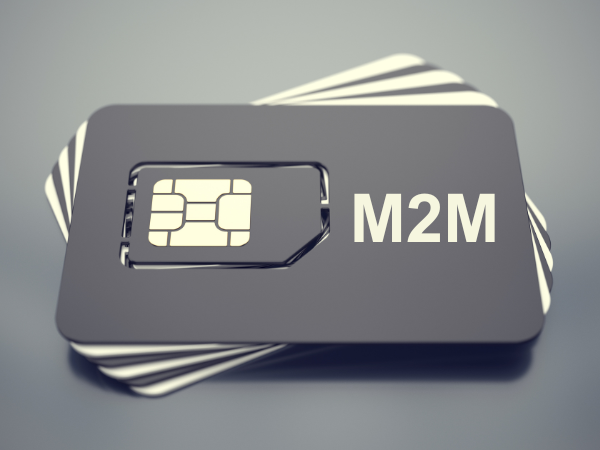Machine-to-machine (M2M) SIM cards can help ensure lift safety and IoT security. In this article we review why M2M SIM cards are the best option for lifts, and the differences between roaming, steered, non-steered, and managed SIM cards.
Why are SIM cards important for the lift industry?
As the elevator industry moves further towards the use of the cellular network and installing GSM units, it is essential to understand the world of SIM cards. These small chips hold the key to connecting devices to the cellular network. It is important to be aware that not all SIM cards are the same, and different features are required in the elevator market to ensure their reliability for emergency phone calls.
What’s the difference between SIM cards and M2M SIM cards?
SIM (Subscriber Identity Module) cards are used to store the information that is required to connect to cellular networks. They store things such as your phone number and the network settings including which network carrier to connect to. SIMs can be single network, or multi-network roaming, and generally come in three sizes: Mini (also referred to as 2FF), Micro (3FF) or Nano (4FF); they can also come embedded in a device. Embedded SIM cards cannot be removed. Which size SIM card you need depends on the device you need it for.
A SIM card is internationally identified by its Integrated Circuit Card Identifier (ICC-ID), which is engraved on the body of the card. It is also identified by the carrier with its International Mobile Subscriber Identity (IMSI). These two numbers tell the carrier that your device can operate on its network.
What is a roaming SIM?
A roaming SIM is a mobile SIM card that can connect to more than one network within its home country. This means that if a network carrier goes down or a signal cannot be gained from one network, it will automatically switch to the next strongest signal from one of the other networks available. This means that you should never lose signal, assuming there is coverage by at least one network. Roaming SIMs provide the most stable connection options. With a regular SIM card if there is a location not covered by the specific network, the signal will be weak or non-existent in that area but by using a roaming SIM it is able to switch to an available network.
Steered or non-steered?
Steered SIMs are roaming but will have a preferred network that the SIM will connect to if available, even if it is not the strongest. It is only when the signal drops below a certain level that the signal will switch to a different network. When a SIM is non-steered this means that they will always connect to the strongest network available and therefore guarantees the maximum-strength connection.
What is a M2M SIM card?
M2M, which stands for machine-to-machine, generally refers to SIM card communication between two devices, with no human interaction. An M2M SIM card is primarily used for sending and receiving data; not for voice and SMS, however, you can get voice and SMS messages included in the package. When thinking about SIMs in terms of the Internet of Things (IoT), M2M is really about the communication between the devices. AVIRE is committed to providing the highest level of IoT security.
How secure are the SIMs?
This depends on the SIM that you use. Often, the SIM provider will provide a private APN (Access Point Name) accessed through a VPN (Virtual Private Network). This provides a secure tunnel for data to be transferred, preventing anyone unwanted from accessing the data or interacting with a deployed device. Generally, off the shelf consumer SIM cards will connect to the public internet, meaning that the data is much less secure, and data could be intercepted.
Managed SIM cards
M2M SIM cards will often give you the ability to view the status of your SIM estate through a management platform, monitoring voice and data usage as well as setting alerts to warn of SIMs that go over-allocated amounts. These alerts can also be turned into caps that won’t let the SIM exceed this usage. The platform often means that you have much more control over the SIMs, with the ability to activate, deactivate and find out key information about the SIM without removing it from its device.
Why should you use an M2M SIM?
For applications using small amounts of data and voice, as is the case with most elevator emergency telephones, specific M2M SIMs usually provide a better deal compared to consumer SIM cards, which will have service plans with large amounts of data and voice usage included.
M2M SIM cards also provide enhanced security and are designed to be managed easily across a large number of devices. M2M SIMs also have the additional benefits that they will generally not switch off during periods of extended inactivity and will often have the ability to manage and update the status of the SIMs, over the air, using a management platform as discussed above.
Are SIM cards safe as lift components?
Lift engineers make complex choices about physical and digital lift safety issues and now, their choices include SIM cards, which, as we’ve seen, include so many options that it can prove to be a potential minefield.
In reality, the security of SIMs depends on the type of SIM that you use. If a lift engineer purchases an off-the-shelf consumer SIM card, which connects to the public internet rather than a private network, then this will be less secure and there is a risk of data being intercepted. Often SIM providers will provide a private APN (Access Point Name) accessed through a VPN (Virtual Private Network). This provides a secure tunnel for data to be transferred, preventing anyone unwanted from accessing the data or interacting with a deployed device.
What makes SIM cards safe lift components?
At AVIRE, we are committed to providing solutions that provide peace of mind to our customers and we adopt a number of measures to ensure the security of our SIMs.
We have our own private APN for our SIMs which means that the SIMs and our devices work through a private network not on the public internet. Only the AVIRE HUB server will access this private network through a VPN tunnel which gives the assurance that information sent will not be compromised and performance remains consistent. In addition, SIMs cannot access the wider internet either, adding an extra layer of protection.
Each SIM has its own passcode from the manufacturer that can be changed or removed, this comes as standard on all SIM cards.
The Digital Communication Platform (DCP) and gateway also can create a PIN to access the SIM that is different to the SIM PIN and unlocks an encryption of the SIM PIN itself, meaning that the SIM PIN is hidden and only the MEMCO by AVIRE device associated with that SIM can gain access. This prevents SIM cards from being inserted into other devices if stolen.
When programming the device by SMS, there is a PIN associated with the device itself that prevents anyone without access to this PIN from changing device settings.
Finally, it is possible for a lift engineer to blacklist (block) or whitelist (only allow) certain numbers, meaning that they can ensure only numbers they approve can phone or be phoned from the device. This blocks attempts by unknown people to program devices by plugging in a handset.
If you are interested in a GSM and M2M SIM card options, please contact our team for more information.

